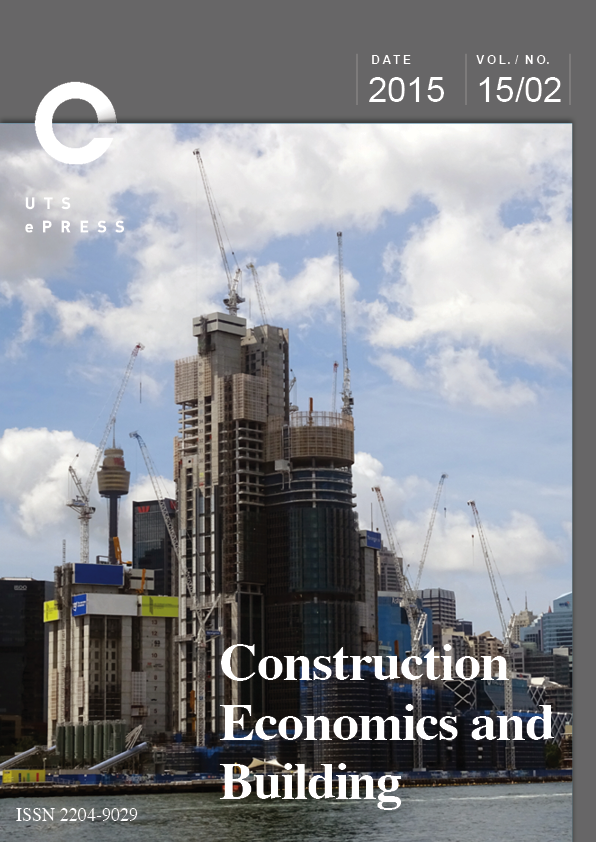Causes of Fatal Accidents Involving Cranes in the Australian Construction Industry
Main Article Content
Abstract
In ten years from 2004 to 2013, 359 workers died in the Australian construction industry because of work related causes. This paper investigates crane-related fatalities in order to find the upstream causation of such accidents. The National Coroners’ Information System (NCIS) database was searched to identify fatal accidents in the construction industry involving the use of a crane. The narrative description of the cases provided in the coroners’ findings and associated documents were content analysed to identify the contributing causal factors within the context of each case. The findings show that the most frequent crane-related accident types were those that were struck by load, and electrocution. The most prevalent immediate circumstance causes were layout of the site and restricted space. The two most commonly identified shaping factors were physical site constraints and design of construction process. Inadequate risk management system was identified as the main originating influence on the accidents. This paper demonstrates that a systemic causation model can provide considerable insight into how originating influences, shaping factors, and immediate circumstances combine to produce accidents. This information is extremely useful in informing the development of prevention strategies, particularly in the case of commonly occurring accident types.
Article Details
Section
Authors who publish with this journal agree to the following terms:
a) Authors retain copyright and grant the journal right of first publication with the work simultaneously licensed under a Creative Commons Attribution License that allows others to share and adapt the work with an acknowledgement of the work's authorship and initial publication in this journal.
b) Authors are able to enter into separate, additional contractual arrangements for the non-exclusive distribution of the journal's published version of the work (e.g., post it to an institutional repository or publish it in a book), with an acknowledgement of its initial publication in this journal.
c) Authors are permitted and encouraged to post their work online (e.g., in institutional repositories or on their website) prior to and during the submission process, as it can lead to productive exchanges, as well as earlier and greater citation of published work (See The Open Access Citation Advantage Service). Where authors include such a work in an institutional repository or on their website (ie. a copy of a work which has been published in a UTS ePRESS journal, or a pre-print or post-print version of that work), we request that they include a statement that acknowledges the UTS ePRESS publication including the name of the journal, the volume number and a web-link to the journal item.
d) Authors should be aware that the Creative Commons Attribution (CC-BY) License permits readers to share (copy and redistribute the work in any medium or format) and adapt (remix, transform, and build upon the work) for any purpose, even commercially, provided they also give appropriate credit to the work, provide a link to the license, and indicate if changes were made. They may do these things in any reasonable manner, but not in any way that suggests you or your publisher endorses their use.
